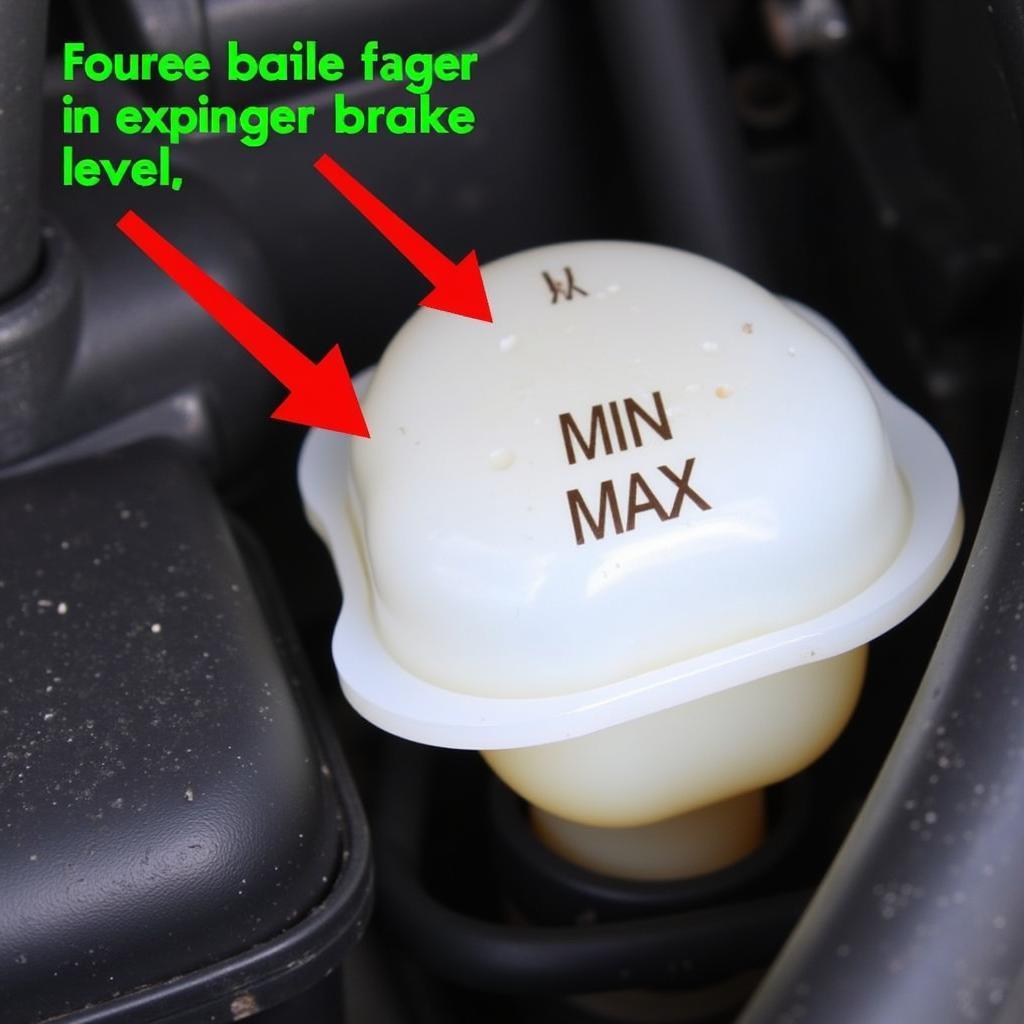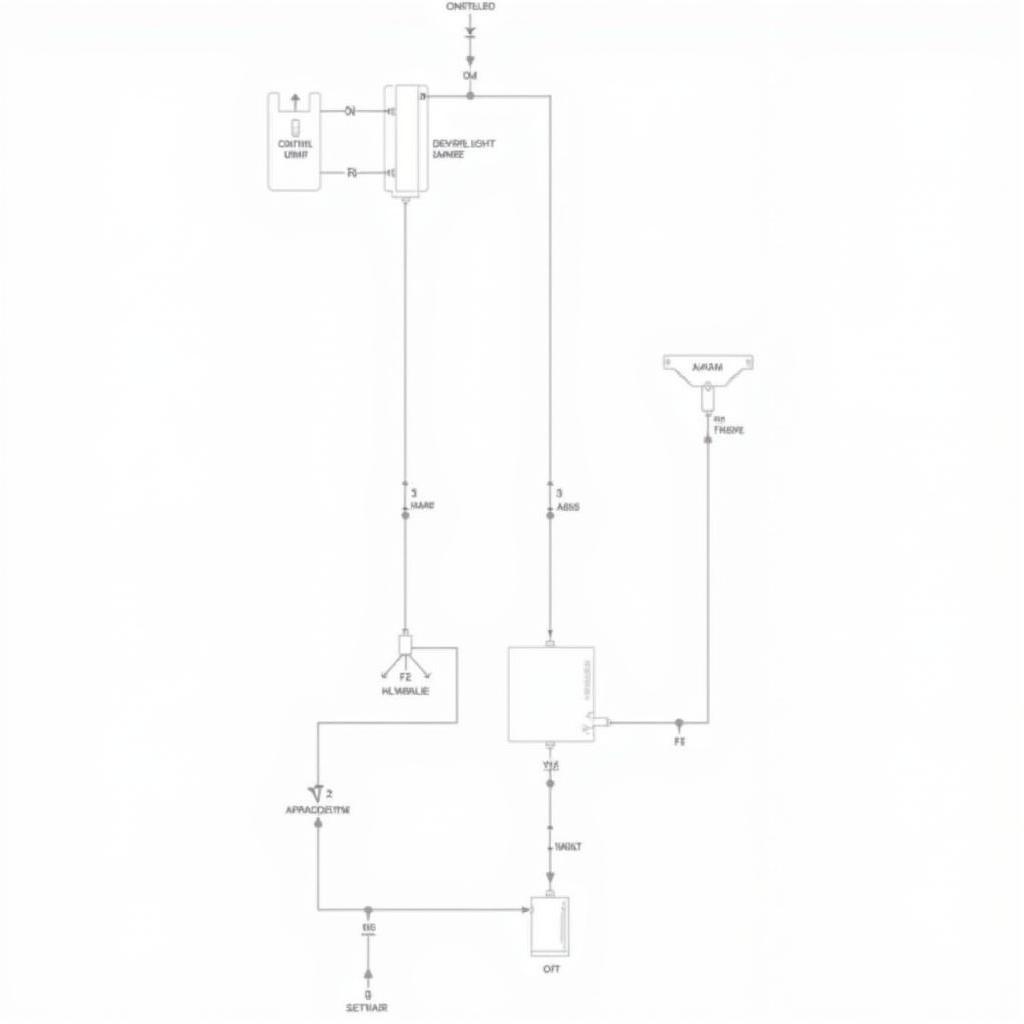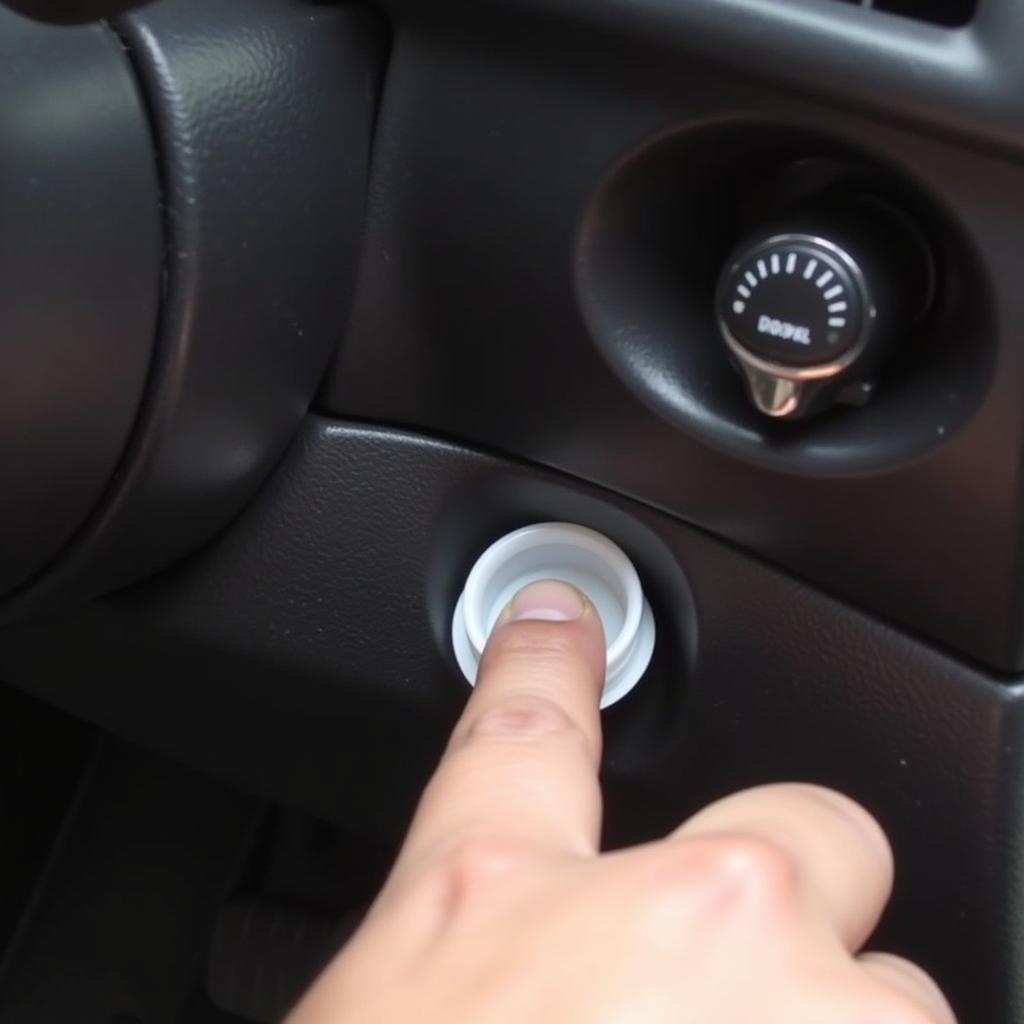The brake warning light on your 1999 Honda Accord is an essential safety feature designed to alert you of potential problems within the braking system. Ignoring this warning light could lead to brake failure and dangerous driving situations. This comprehensive guide will delve into the common causes of a 1999 Honda Accord brake warning light and provide you with potential solutions to get you back on the road safely.
Understanding Your Honda Accord’s Brake Warning Light System
Before we dive into the causes and solutions, it’s essential to understand how your Honda Accord’s brake warning light system works. The warning light is connected to various components within your braking system, including:
- Parking brake: The light typically illuminates when the parking brake is engaged.
- Brake fluid level: A drop in brake fluid level often triggers the warning light, signaling a potential leak or worn brake pads.
- Brake master cylinder: This vital component distributes brake fluid pressure to the wheels. Malfunctions within the master cylinder can activate the warning light.
- ABS system: Some 1999 Honda Accords have an Anti-lock Braking System (ABS). If the ABS control module detects a fault, it can trigger the brake warning light.
Common Causes of a 1999 Honda Accord Brake Warning Light
Here are the most common reasons why your 1999 Honda Accord’s brake warning light might be on:
1. Low Brake Fluid Level
The most common culprit behind a glowing brake warning light is a low brake fluid level. Brake fluid is the lifeblood of your braking system, and a leak or worn brake pads can cause the fluid level to drop.
Solution:
- Check the brake fluid level: Locate the brake fluid reservoir under the hood (refer to your owner’s manual for the exact location).
- Add brake fluid: If the fluid level is low, carefully add the recommended brake fluid type until it reaches the “MAX” line.
- Inspect for leaks: A consistently low brake fluid level indicates a leak. Carefully inspect brake lines, hoses, and connections for any signs of leakage.
 Brake Fluid Reservoir
Brake Fluid Reservoir
2. Worn Brake Pads
Brake pads naturally wear down over time due to friction. When the pads reach a certain thinness, they can trigger the brake warning light.
Solution:
- Inspect brake pad thickness: Remove the wheel and visually inspect the brake pads. If they appear thin or worn, it’s time for a replacement.
- Replace brake pads: It’s generally recommended to replace brake pads in pairs (both front or both rear) to maintain even braking performance.
3. Faulty Brake Master Cylinder
The brake master cylinder is responsible for generating the hydraulic pressure needed to activate your brakes. A failing master cylinder can lead to a loss of braking power and illuminate the warning light.
Solution:
Diagnosing and repairing a faulty brake master cylinder often requires specialized tools and expertise. It’s best to consult a qualified mechanic for inspection and potential replacement.
4. ABS Issues
If your 1999 Honda Accord is equipped with ABS, a problem with this system can trigger the brake warning light.
Solution:
ABS issues can be complex and may involve faulty sensors, a malfunctioning control module, or wiring problems. Diagnosing and repairing ABS problems requires specialized equipment. Seek assistance from a qualified mechanic or dealership.
 ABS System
ABS System
Remote Diagnostics and Software Solutions for 1999 Honda Accords
Advancements in automotive technology have paved the way for remote diagnostics and software solutions that can identify and address certain brake system issues in some 1999 Honda Accord models.
How it works:
- Onboard diagnostics (OBD-II) port: Your 1999 Honda Accord is equipped with an OBD-II port, usually located under the dashboard.
- Remote diagnostic tools: Specialized tools can connect to the OBD-II port to read diagnostic trouble codes (DTCs) stored in the vehicle’s computer. These codes provide insights into the specific area of the braking system experiencing problems.
- Software updates: In some cases, software updates for the ABS control module or other electronic components may be available to address specific brake system issues.
Benefits of Remote Diagnostics and Software Solutions:
- Early detection: Remote diagnostics can detect issues before they escalate into major problems.
- Accurate diagnosis: DTCs pinpoint the root cause of the problem, reducing guesswork and unnecessary repairs.
- Convenient solutions: Some software updates can be performed remotely, saving you a trip to the mechanic.
Note: Not all 1999 Honda Accord models are compatible with all remote diagnostic tools and software updates. Consult your owner’s manual or a trusted mechanic to determine the compatibility of your vehicle.
Conclusion
Addressing a brake warning light on your 1999 Honda Accord is crucial for your safety. While this guide provides valuable insights into common causes and solutions, it’s essential to remember that proper diagnosis and repair often require professional expertise. If you’re unsure about any aspect of your vehicle’s braking system, consult a qualified mechanic to ensure your safety and the optimal performance of your Honda Accord.


